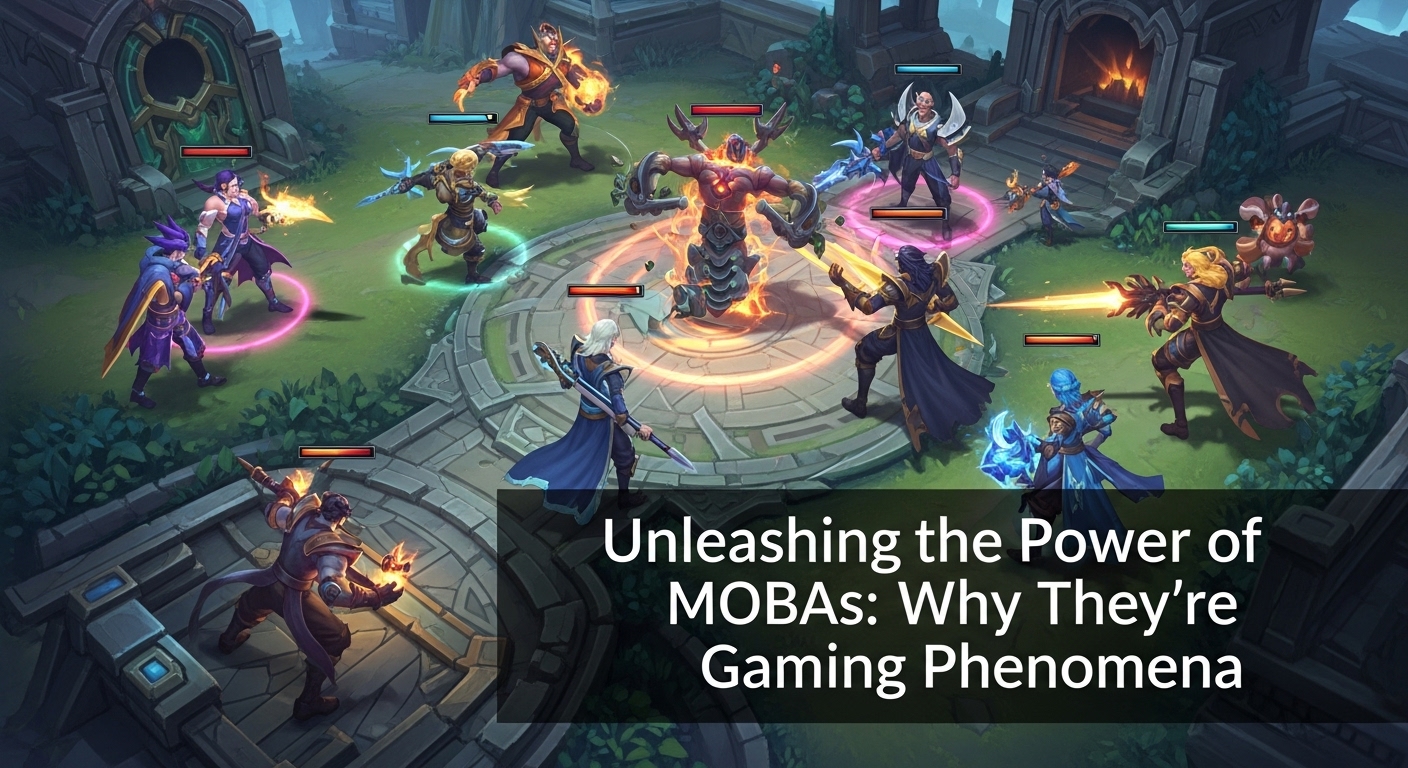First-person shooters, commonly known as FPS, are a genre of video games that has captivated millions of gamers worldwide. FPS games place the player in the perspective of the protagonist, offering an immersive experience that feels like you’re right there in the action. From iconic titles like “Doom” to current favorites like “Call of Duty,” the FPS genre has evolved in leaps and bounds. Let’s dive into this fascinating world and explore how FPS games have become a dominant force in gaming.
The Origins of FPS Games
Back in the day, the emergence of FPS games was quite the revolution. The genre started to gain traction in the 1990s when games like “Wolfenstein 3D” hit the scene. This game laid the groundwork for what was to come, offering players a first-person perspective and the thrill of shooting enemies in a 3D environment. But it was “Doom,” released in 1993, that truly solidified the popularity of FPS games. This game introduced a level of intensity and engagement that was unprecedented at the time.
As the genre progressed, developers began to experiment with new mechanics, leading to a wide variety of FPS games that cater to different tastes. Whether you prefer the fast-paced action of “Quake” or the tactical gameplay of “Counter-Strike,” there’s something for everyone.
Impact of Technology on FPS Games
Technology has played a significant role in the evolution of FPS games. With advancements in graphics, processing power, and online connectivity, the genre has expanded beyond imagination. Modern FPS games feature stunning graphics, realistic physics, and complex AI, providing players with a more immersive experience.
Online multiplayer capabilities have also transformed the FPS landscape, allowing players from all over the world to compete against each other. This connectivity has given rise to competitive gaming and eSports, where FPS games like “Overwatch” and “Valorant” dominate the scene. Curious about how FPS games have evolved over the years? This detailed article on the thrilling evolution of FPS games offers insights into this dynamic genre’s journey.
Subgenres and Innovations
FPS games have branched out into various subgenres, each offering a unique twist on the classic formula. Let’s take a look at some of these:
- Tactical FPS: Games like “Rainbow Six Siege” emphasize strategy and teamwork, requiring players to carefully plan their moves and coordinate with their team.
- Hero Shooters: “Overwatch” is a prime example, featuring distinct characters with unique abilities, adding a layer of strategy beyond just shooting.
- Battle Royale: Titles such as “PUBG” and “Fortnite” have taken the world by storm, dropping players into massive maps where the last person standing wins.
These subgenres have kept the FPS genre fresh and exciting, attracting new players while retaining the interest of veterans.
The Social Aspect of FPS Games
FPS games aren’t just about shooting and winning. They are social experiences, offering players an opportunity to connect and interact with others. Guilds, clans, and online communities have formed around popular titles, creating spaces where players can share strategies, engage in friendly banter, and build lasting friendships.
Moreover, streaming platforms like Twitch have further amplified the social aspect, allowing players to showcase their skills and personalities to a global audience. The rise of streamers and content creators has created a new layer of interaction, where viewers can engage with their favorite players and even play alongside them.
Breaking Down the Mechanics: What Makes a Great FPS?
Creating a successful FPS game involves balancing several key elements. These include:
- Game Design: Level design is crucial in FPS games. Well-crafted maps offer various pathways, strategic chokepoints, and opportunities for ambushes, keeping players on their toes.
- Weapon Variety: A diverse arsenal of weapons allows players to find their preferred playstyle, whether they favor sniping from a distance or charging in with a shotgun.
- Sound Design: Audio cues can be just as important as visuals, providing players with critical information about enemy movements and actions.
Each of these elements contributes to the overall experience and can make or break an FPS game. A game that nails these aspects will likely stand out and resonate with players.
Competitive Gaming and eSports
FPS games have become a staple in the competitive gaming scene. Events and tournaments draw huge audiences, with prize pools reaching staggering amounts. Games like “Counter-Strike: Global Offensive” and “Call of Duty” have thriving competitive communities, where players dedicate countless hours to honing their skills.
The rise of eSports has transformed gaming from a casual pastime to a professional career for many. With millions of viewers tuning in to watch live events, it’s clear that FPS games have become a significant part of the eSports ecosystem. According to this article on Forbes, FPS games have indeed become a dominant genre in the video game industry, largely thanks to their success in competitive eSports.
Challenges in the FPS Genre
Despite its success, the FPS genre faces several challenges. One of the main issues is the saturation of the market. With so many titles available, it can be difficult for new games to stand out. Developers must constantly innovate and offer fresh experiences to capture players’ attention.
Another challenge is the balance between realism and fun. Players want games to be immersive and believable, but they also seek enjoyment and accessibility. Striking the right balance can be tricky but is essential for a game’s success.
The Role of Community Feedback
Community feedback plays a crucial role in shaping FPS games. Developers often rely on player input to identify issues, make improvements, and introduce new features. Many games incorporate beta testing phases, allowing players to provide feedback before the official release.
Forums, social media, and other online platforms serve as spaces for players to voice their opinions and share their experiences. Developers who actively engage with their communities are often more successful in creating games that resonate with their audience.
FAQs: FPS Games
- What are some classic FPS games I should try?
Ah, the classics! You can’t go wrong with “Doom,” “Half-Life,” or “Quake.” These games set the stage for everything that followed. - Are there FPS games suitable for beginners?
Definitely! Games like “Overwatch” and “Apex Legends” are fairly approachable with beginner-friendly tutorials and casual modes. - How do I improve my skills in FPS games?
Practice is key. Try focusing on your aim, map awareness, and team communication. Watching streams or tutorials can also offer valuable insights. - What’s the difference between tactical FPS and regular FPS games?
Tactical FPS games, like “Rainbow Six Siege,” emphasize strategy and teamwork, while regular FPS games may focus more on individual skill and fast-paced action. - Do I need a high-end PC to enjoy FPS games?
Not necessarily. While a good setup can enhance your experience, many FPS games are optimized to run on a range of systems. Check the minimum requirements before buying.
And there you have it. A look at FPS games, their impact, and the communities they’ve built. The genre isn’t just about shooting targets; it’s about exploring new worlds, testing your reflexes, and connecting with people around the globe. As gaming technology advances, it will be exciting to see where FPS games go next. Whether you’re a veteran or a newcomer, there’s always something new to discover in this dynamic genre.



